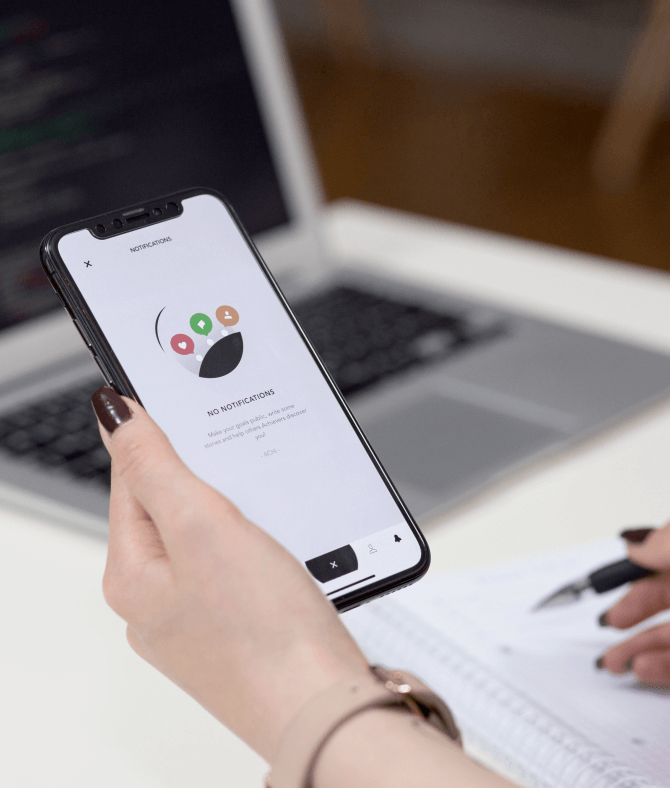
6 Ranking Factors to focus for Fast Rankings in Google
Why do most people prefer Google to other search engines? It’s for the reason that Google provides higher quality results for every visitor. Google understands search intent better and responds in the most accurate and relevant way.
That’s the reason why Google has surpassed other search engines like Bing and Yahoo, with over 5 billion searches happening on Google every day. It’s everybody’s dream to rank higher on Google search results.
But it’s not an easy task for a person to stand out in Google’s listings. Instead, it requires constant efforts and attention to get to the top position in its search results.
Well, why do you want to appear on the first page of Google? Primarily, it’s because websites get more visibility when they are on top. Secondly, being on top enhances your website authenticity, trust and eventually generating more traffic and leads.
So, the question is how you can climb to the top of Google search results? What are those ranking factors that play their part in getting you to the top?
Just stick with us; we are going to unearth the secret to rank No.1 on Google.
First things first, There are tons of SEO ranking factors that help Google determine which websites should display in search results.
Read more about SEO and How it works.
It is reported that Google changes its algorithm approximately 500 to 600 times each year. Therefore it becomes challenging for you to keep up with all the changes. So, you might wonder: which Google ranking factors will prove to be helpful for your website?
The good news is that you don’t need to consider all of the 200 ranking factors to attain a top position. Some ranking factors are more dominant than others, and they promise you the top slot. Let’s discuss the top 6 ranking factors you should focus on for fast rankings in Google.
1. Publish High-Quality Content
Consistency in producing high-quality content is one of the many factors of SEO that helps you rank No.1 on Google. Your content should provide valuable and helpful information to the visitor and is relevant to the visitor’s search query.
Creating high-quality content allows your visitors to interact with your web page, increasing on-page time and lower bounce rate.
Read more about Is SEO worth the money?
Below is the difference between high-quality content and low-quality content:
Also, it would help if you composed well-written and insightful blogs and how-to-do guides that position yourself as an opinion leader in your industry.
Besides, your content should also cover the following areas to improve your website presence in SERPs:
- Match user’s intent with content
- Use keyword research to build a solid foundation for SEO
- Consider voice search queries.
Match User Intent with Content
Understanding user’s intent is necessary to devising web pages that drive potential traffic. Your content not only should be relevant, but it should also satisfy the user intent (i.e. the content answers the site visitor’s questions).
Like this:
You should align your content strategy with the user’s search intent. If you want to know what your visitors are looking for, you can head over to Google Analytics. It will give you an idea of the keywords your visitors are using to land on your website. You can also get a search analytics report in Google Search Console. It will let you know what visitors are clicking on the SERPs to get to your website.
Use Keyword Research To Build A Solid Foundation For SEO
Keyword research is one of the significant SEO tasks. It is a method of finding and arranging the keywords that matter most for a given website’s intentions.
By doing competitor research, you can unearth keyword gems with average search volume and a high click-through rate for your audience.
Keyword research helps you understand your audience and the questions they ask, then finding ways to solve those queries in your content using a mix of keywords and phrases.
Consider Voice Search Queries
Since the arrival of AI assistants like Siri, Cortana and Alexa that understand voice commands, a new way of Searching emerged. When a person commands Siri to do the task, he uses a complete sentence or, in other words, a long-tail keyword.
Here are the quick stats about voice search optimisation:
So targeting and using long-tail keywords in your content will do the math for Voice Search optimisation.
2. Obtain Relevant and High-Authority Backlinks
After publishing high-quality content, the second most important ranking factor is getting quality backlinks. Backlinks are significant for SEO because they serve as a “vote of confidence” from one website to another. They are an integral part of Google’s ranking algorithm, and it’s how the search engine crawler finds your website for indexing.
Content and backlinks should go hand in hand, as websites without having backlinks barely get organic traffic.
Below is the example of a backlink:
Backlinks play a key role in your SEO campaign’s overall success. They add credibility and trust to your website. Google then combines all those votes and determines whether your website deserves to rank in the top results or not. They usually have a great impact on organic search performance.
All you need to do is get backlinks from popular and high authority websites to increase your chances of higher ranking. By obtaining backlinks, you are actually giving Google a signal that your content is reliable as different websites can vouch for you.
3. Make Your Website Mobile-Friendly
Nowadays, most people use smartphones to perform searches than use computers.
About 60 percent of organic search engine visits appear on mobile devices, according to Statista. This implies that if you own a website, you should consider optimising it for smartphone use.
This is how a mobile-friendly website looks like:
If you don’t have a mobile optimised website, it will seriously hurt your marketing efforts.
Even though Google has stated that they don’t publicly favour any one set way of making mobile websites (whether it’s responsive, active, or separate URLs), a responsive website is their suggested format when it comes to rankings.
Google says that responsive design encourages its “algorithms explicitly assign indexing properties to the webpage rather than needing to indicate the presence of the corresponding desktop/mobile pages.”
Furthermore, mobile-first indexing suggests that Google mainly uses the mobile version of indexing and ranking content. Hence, in the mobile-first index’s age, your mobile website is an essential component of your presence in the search engine result pages.
To ensure your website ranks well, you ought to follow Google’s guidelines and ensure your content matches identically on your computer and smartphone.
4. Optimise Your Page Speed
How quickly does your website have to load before a visitor skips and closes the browser? The recommended page load time is under two seconds, according to Google. If your website cannot load in under two seconds, you will most likely lose your site visitor.
Page speed is one of the ranking factors of Google. The slower your website’s load, the fewer visitors you’ll have, and the less likely your page will rank high in search results.
There are some tools available to examine a website’s average page speed. Many fixes are comparatively easy if they are done by someone who understands what they are performing.
Faster loading pages lead to a better overall website experience; therefore, Google’s progress toward making it a mobile ranking factor.
Visitors are impatient, and they don’t usually wait; therefore, you will have immense opportunities to drive traffic to your website by increasing website speed.
Google wants to provide outstanding fast search results, and a high bounce rate is an indication that a webpage does not cater to a user’s needs. A high bounce rate implies that a visitor leaves a web page that takes longer than two seconds to load.
In short, your website speed matters to your conversion rate.
5. Master Your On-Page Optimisation
On-page SEO allows Google to analyse your website and its content to recognise if a visitor’s query is relevant to your site.
On-page SEO is the method of optimising web pages in order to rank higher and attract more relevant traffic in search engines. It refers to both the content and HTML source code of a page that can be optimised.
Optimising your website can improve your high-quality content, get found quicker by Google and visitors.
Following are the ways that on-page optimisation will still make a major impact in 2021:
Meta Description
The meta description shows information about your title tags and page description in search engines. All you need to do is to write the best titles and descriptions for your web pages so a user could find them valuable and head over to your website.
Internal Links
Internal links operate from one web page on a domain to a different web page on the same domain. They are usually used in the main navigation. These sort of links are beneficial for two purposes.
First, they enable visitors to navigate a website. Secondly, they help build an information authority for the given website.
6. Use HTTPS
HTTPS enhances security for users by encrypting data between browser and server. If you have a non-secure website with input fields, you will likely get a warning email from Google Search Console. All you need to do is to get an SSL certification to make your website more secure.
Wrapping Up
Ranking signals all move collectively to help SEO specialists build credibility. This implies that SEO is going forward process, and it requires a sophisticated and more comprehensive strategy.
If factors like high authority backlinks, page load speed, and other factors continue to be part of your SEO strategy, then you can earn a top position in the SERPs.





